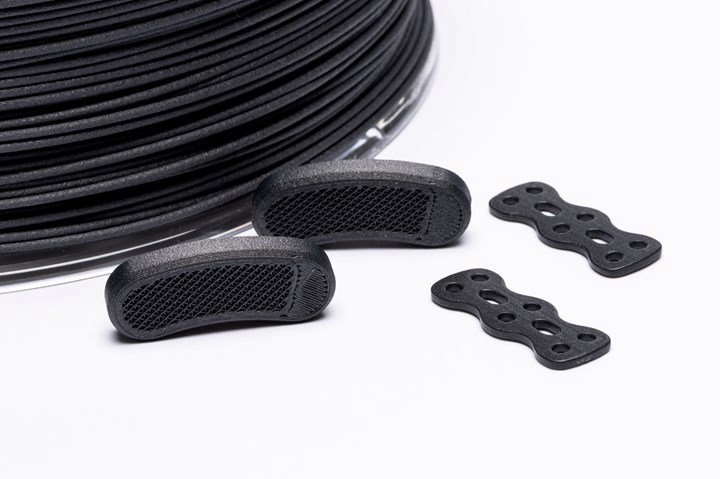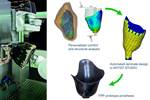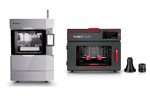Evonik showcases chopped carbon fiber-reinforced PEEK filament
Vestakeep is available at two levels of carbon fiber content and appropriate for long-term surgical implants.

Carbon fiber-reinforced PEEK filament for printing long-term surgical implants. Photo Credit: Evonik
Evonik (Marl, Germany) is introducing a new chopped carbon fiber-reinforced polyetheretherketone (PEEK) filament, for use in 3D-printed medical implants. It can be processed in common extrusion-based 3D printing technologies such as fused filament fabrication (FFF).
Vestakeep iC4612 and Vestakeep iC4620 feature 12% and 20% carbon fiber content, respectively. The two grades offer a choice of material depending on the required strength and flex properties of 3D-printed implants such as bone plates and other reconstructive prostheses.
Carbon fibers add strength to the filament products, while PEEK adds ductility. Other benefits, according to Evonik, include the ability to define the alignment of carbon fibers during the printing process, biocompatibility and avoiding X-ray artifacts.
With a diameter of 1.75 mm, Vestakeep iC4612 and iC4620 are supplied on 500g and 1,000g spools that can be used directly in standard FFF/FDM 3D printers for PEEK materials.
“No other application field showcases more the advantages of 3D printing, such as individualization or design freedom, than medical technology,” says Marc Knebel, head of medical systems at Evonik. “In trauma applications, for instance, 3D-printed solutions offer an enormous time advantage over traditionally manufactured medical devices. It is conceivable that patient-specific solutions can be manufactured within 2 or 3 days, significantly improving the recovery phase.”
Related Content
-
Plant tour: Airbus, Illescas, Spain
Airbus’ Illescas facility, featuring highly automated composites processes for the A350 lower wing cover and one-piece Section 19 fuselage barrels, works toward production ramp-ups and next-generation aircraft.
-
The potential for thermoplastic composite nacelles
Collins Aerospace draws on global team, decades of experience to demonstrate large, curved AFP and welded structures for the next generation of aircraft.
-
Carbon fiber, bionic design achieve peak performance in race-ready production vehicle
Porsche worked with Action Composites to design and manufacture an innovative carbon fiber safety cage option to lightweight one of its series race vehicles, built in a one-shot compression molding process.






